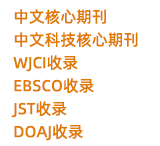



基于水质标识指数法的秦皇岛市河流水质评价
田海兰 程林 刘西汉 王艳霞
基于水质标识指数法的秦皇岛市河流水质评价
Application of Water Quality Identification Index in Water Quality Evaluation of Qinhuangdao River
| {{custom_ref.label}} |
{{custom_citation.content}}
{{custom_citation.annotation}}
|
/
| 〈 |
|
〉 |